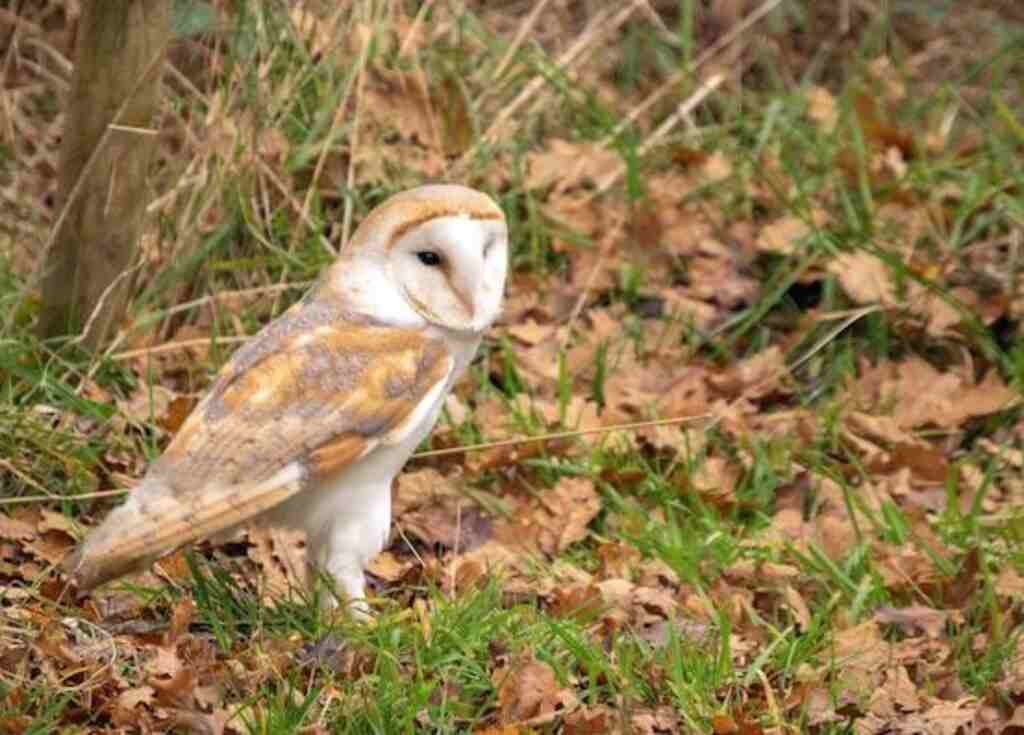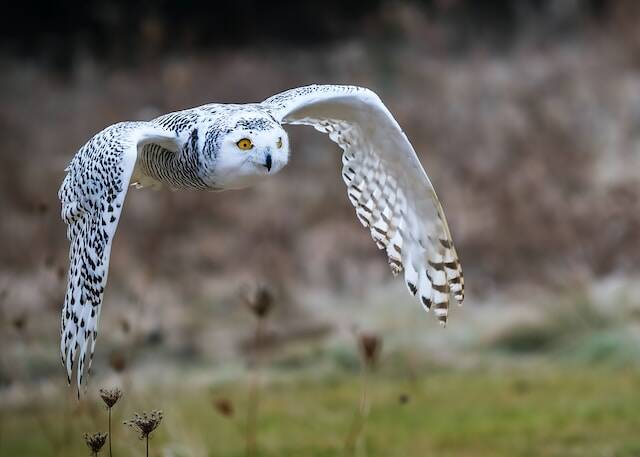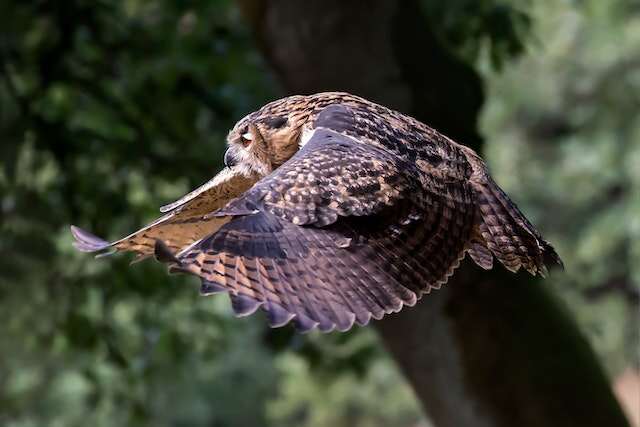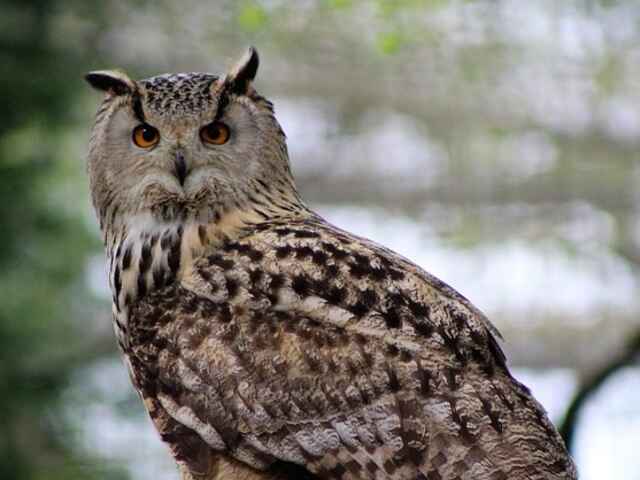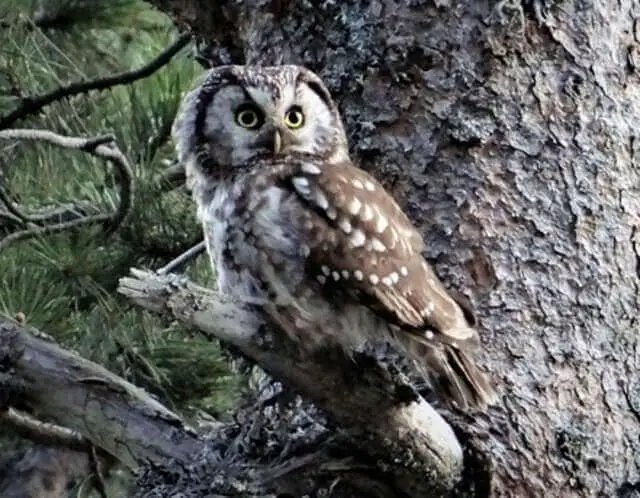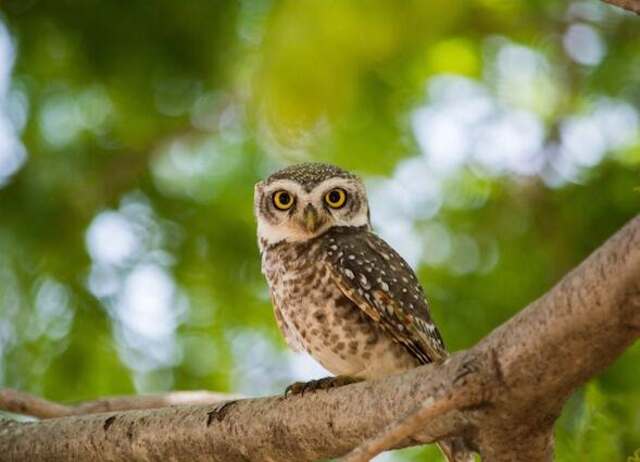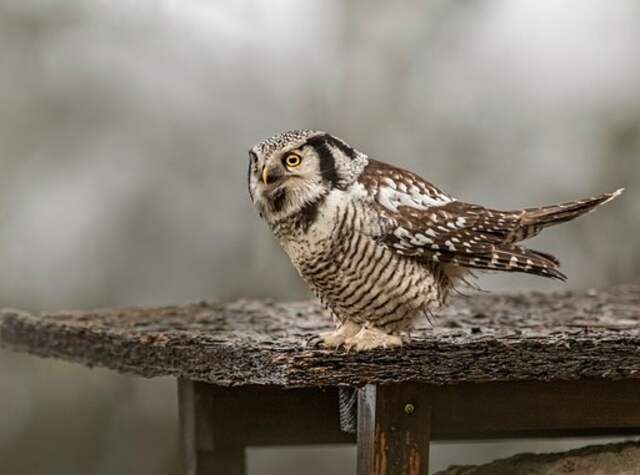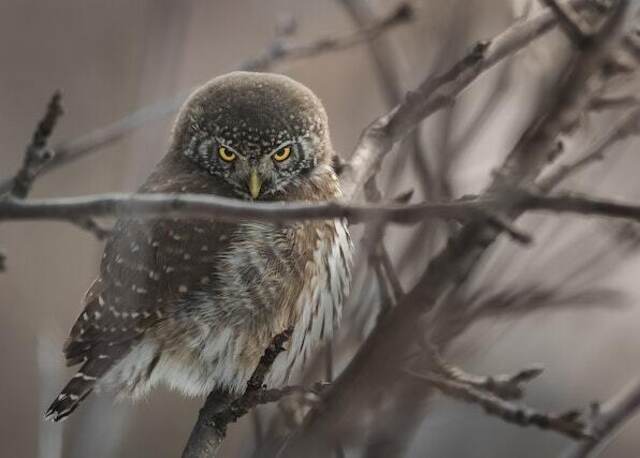Do Owls Eat Beetles? Yes, they do! But did you know that beetles make up a small portion of their diet? In fact, owls are opportunistic predators that feed on a variety of prey.
In this article, we’ll take a closer look at the eating habits of owls and explore the fascinating world of these nocturnal hunters. Get ready to hoot with excitement!
Table of Contents
- 1 The Fascination with Owls and Their Diet
- 2 Introducing the Topic of Beetles in Owl Diet
- 3 Overview of Owl Diet
- 4 The Beetle Buffet: Types of Beetles Owls Eat
- 5 The Nutritional Value and Benefits of Eating Beetles
- 6 The Unique Hunting Techniques of Owls for Beetles
- 7 Other Insects in Owl Diet
- 8 Comparing Nutritional Value
- 9 Conclusion
- 10 FAQs: Do Owls Eat Beetles?
- 10.1 Do all species of owls eat beetles?
- 10.2 What types of beetles do owls eat?
- 10.3 Are beetles a common food source for owls?
- 10.4 How do owls catch beetles?
- 10.5 Are there any beetles that are toxic to owls?
- 10.6 Can owls digest beetle shells?
- 10.7 Do baby owls eat beetles?
- 10.8 How many beetles can an owl eat in one meal?
- 10.9 Can owls hunt for beetles at night?
- 10.10 Are beetles a nutritious food source for owls?
- 11 Author
The Fascination with Owls and Their Diet
Owls are captivating creatures, known for their mysterious nature and ability to navigate the dark. They have been the subjects of countless myths, legends, and folklore throughout history.
People are often intrigued by their unique physical features – large eyes that stare out from a round face, silent flight, and sharp talons.
But what really sets owls apart is their diet. They are apex predators that can hunt a variety of prey, from rodents to birds to insects.
Their varied diet has contributed to their reputation as cunning hunters. But there’s one question that many people ask about owls: do they eat beetles?
Introducing the Topic of Beetles in Owl Diet
While most people are aware that owls eat other animals like mice and birds, not everyone is familiar with the specifics of their diet. Some may wonder if they have a preference for any particular types of prey, or if they eat insects at all.
The truth is that owls do consume insects as part of their diet, including beetles. Beetles are a diverse group of insects, with over 400,000 known species worldwide.
They can be found in almost every habitat on Earth – from forests to deserts to aquatic environments – making them an abundant food source for many animals. So just how important are beetles in an owl’s diet?
In this article, we’ll explore the topic in detail by examining the types of beetles owls eat and how they hunt them down.
We’ll also take a look at other insects that make up an owl’s diet and compare their nutritional value with those of beetles.
Overview of Owl Diet
Owls, with their mysterious appearance and haunting calls, have captured the imagination of humans for centuries, making them one of the most fascinating creatures on earth.
These birds of prey have a reputation for being skilled hunters, with their sharp talons and keen eyesight. But what do they actually eat?
Answering that question requires a deeper understanding and consideration of various factors. While the exact diet of an owl can vary depending on factors such as species and location, there are some common prey items that many owls consume.
One of the most well-known prey items for owls are rodents, such as mice or voles. These small mammals make up a large portion of many owl diets, and are often hunted in open fields or along forest edges.
But rodents aren’t the only thing on an owl’s menu. Many species also feed on birds, which can range from small songbirds to larger waterfowl.
In fact, some owls specialize in hunting birds and have developed unique adaptations to help them do so successfully. In addition to rodents and birds, many owls also consume a variety of insects.
This might include beetles (which we’ll talk about more later), moths, grasshoppers, and more. While insects may not seem like a substantial meal for such a large bird, they can provide important nutrition and energy.
Overall, it’s clear that owls have diverse diets that allow them to thrive in a variety of environments.
From wooded forests to open fields to coastal wetlands, these birds have adapted to hunt whatever prey is available in their habitat – making them one of the most successful predators in the animal kingdom.
The Beetle Buffet: Types of Beetles Owls Eat
Owls are known for their diverse diets, which include a wide variety of prey animals. While many people think of owls as primarily eating rodents and birds, they also have a taste for insects.
In fact, beetles are one of the most important insect groups in an owl’s diet! There are several types of beetles that owls eat regularly.
One common beetle that owls dine on is the click beetle. Click beetles are named for the sound they make when they try to flip over on their backs.
They have a hard, shell-like exterior and can be found across North America. Click beetles provide a good source of protein for owls and can be found year-round.
Another beetle that is part of an owl’s diet is the ground beetle. Ground beetles come in many different colors and sizes and can be found worldwide.
These speedy insects are often active at night, making them an easy target for nocturnal hunters like owls. Owls also enjoy feasting on scarab beetles – specifically June bugs – which can grow up to 3cm long!
June bugs have tough exoskeletons that provide high-quality nutrients for the birds’ bodies. These hearty meals help keep owls strong throughout their lives.
| Types of Beetles | Owls That Eat Them |
|---|---|
| Ground beetles | Barn owls, great horned owls, screech owls |
| Click beetles | Barn owls, great horned owls, screech owls |
| June beetles | Barn owls, great horned owls, screech owls |
| Rhinoceros beetles | Barn owls, great horned owls, screech owls |
| Stag beetles | Barn owls, great horned owls, screech owls |
| Rove beetles | Barn owls, great horned owls, screech owls |
| Weevils | Barn owls, great horned owls, screech owls |
| Darkling beetles | Barn owls, great horned owls, screech owls |
| Ground weevils | Barn owls, great horned owls, screech owls |
| Lady beetles (ladybugs) | Barn owls, great horned owls, screech owls |
Note that this table is not exhaustive and may vary based on geographical location and specific owl species.
The Nutritional Value and Benefits of Eating Beetles
Although it may not seem particularly appetizing to us humans, eating beetles provides numerous health benefits for owls. For starters, most beetles are rich in protein – an essential macronutrient that helps build muscle mass and repair body tissues.
Protein also helps keep feathers healthy and intact so that these nocturnal creatures can fly silently through the night undetected by prey or predators.
In addition to protein, many types of beetles contain important vitamins like B12, which aids in the proper functioning of the nervous system.
Other vitamins found in beetles include vitamin A, which is essential for good eyesight, and vitamin K, which helps with blood clotting.
The chitin found in beetle exoskeletons also provides important dietary fiber that can help maintain healthy digestion in these carnivorous birds.
Most beetles are low in fat and calories – making them a great food choice for owls looking to maintain a lean physique.
Overall, beetles provide an important food source for owls, offering up a wide range of essential nutrients to keep these nocturnal birds healthy and strong.
So next time you spot an owl swooping down on what appears to be another harmless bug – remember that it’s all part of their carefully balanced diet!
| Nutrient | Benefits |
|---|---|
| Protein | Builds muscle mass, repairs body tissues, keeps feathers healthy |
| Vitamin B12 | Proper functioning of the nervous system |
| Vitamin A | Essential for good eyesight |
| Vitamin K | Helps with blood clotting |
| Chitin | Provides important dietary fiber for healthy digestion |
| Low fat and calories | Great food choice for maintaining a lean physique |
The Unique Hunting Techniques of Owls for Beetles
Owls are well-known for their exceptional hunting skills, and beetles are one of their preferred prey. These nocturnal creatures have developed unique techniques to track down and catch their prey, including beetles.
The physical characteristics of owls, such as their large eyes and excellent hearing abilities, play a crucial role in their hunting success.
One of the most distinctive hunting techniques that owls use to catch beetles is called “still-hunting.” Owls rely on their sharp vision to spot a beetle crawling on the ground or a tree trunk.
They then remain absolutely still, waiting patiently for the right moment to swoop down and grab their prey with their talons. This technique requires great patience and precision from the owl.
In addition to still-hunting, owls also use another technique called “foot-stomping” to capture beetles. This method involves the owl stomping its feet on the ground repeatedly.
The vibrations created by this action cause any nearby insects or small animals to panic and move around in an attempt to escape danger. The owl is then able to locate its prey more easily and go in for the kill.
Owls are also known for using surprise attacks when pursuing beetles as well as other insects.
When an owl spots a beetle crawling along a branch or tree trunk, it will make use of its silent flight capabilities by positioning itself above its target before diving downwards at incredible speed.
With its sharp talons ready, it snatches up the beetle before it even knows what hit it.
Overall, owls’ unique hunting techniques for beetles showcase not only how intelligent these birds are but also how they have adapted perfectly over time to become efficient predators that can survive even in challenging environments like deep forests where they might be other larger predators competing with them for food resources.
| Hunting Technique | Description |
|---|---|
| Aerial Hunting | Some owl species, such as barn owls, hunt for beetles while flying low over fields. They use their acute vision and hearing to detect the beetles and then swoop down to catch them in their talons. |
| Ground Hunting | Other owl species, like the great horned owl, hunt for beetles on the ground. They use their silent flight and sharp talons to catch the beetles. They may also use their wings to create a “parabolic dish” effect, which amplifies the sounds made by the beetles crawling on the ground. |
| Perch Hunting | Some owls, such as the pygmy owl, hunt for beetles from a perch. They will sit and wait for the beetles to come to them, and then quickly swoop down to catch them. They may also use their camouflage to blend in with their surroundings and surprise the beetles. |
Other Insects in Owl Diet
Owls are known to eat a variety of insects besides beetles. Some of the most common insects that owls consume include grasshoppers, moths, crickets, and mealworms.
Each insect offers a different nutritional value and benefit to the owl’s diet. One insect that is commonly consumed by owls is the grasshopper.
Grasshoppers provide high levels of protein and fiber which help to keep an owl healthy. They also contain essential vitamins and minerals such as vitamin B12, iron, and zinc.
The crunchy exoskeleton of the grasshopper provides a good source of calcium which aids in bone development. Another insect often found in an owl’s diet is the moth.
Moths are rich in fat, which provides a good source of energy for the owl’s metabolic processes. They also contain vitamins A, B1, and B2 as well as minerals like iron and phosphorus which aid in digestion.
Crickets are another popular insect for owls to consume due to their high protein content. Crickets offer a complete source of protein containing all nine essential amino acids required by birds for proper growth and development.
Additionally, crickets contain healthy fats like linoleic acid which promote heart health. Mealworms are another common insect found in an owl’s diet.
Mealworms offer a high amount of protein with lower fat content compared to other insects like moths or crickets. They also contain essential amino acids necessary for growth and development.
| Insect | Nutritional Benefits |
|---|---|
| Grasshopper | High protein and fiber, vitamins B12, iron, and zinc, good source of calcium for bone development |
| Moth | Rich in fat for energy, vitamins A, B1, and B2, minerals like iron and phosphorus for digestion |
| Cricket | High protein content, complete source of protein with essential amino acids, healthy fats like linoleic acid |
| Mealworm | High protein content, lower fat content, essential amino acids for growth and development |
Comparing Nutritional Value
Each insect offers different nutritional benefits for owls; however, they all play an important role in maintaining the bird’s overall health and well-being.
For example, beetles offer high levels of calcium which helps strengthen bones while grasshoppers offer essential vitamins like B12 needed for proper brain function.
Crickets are a great source of protein, while mealworms offer a lower fat content, making them a good choice for owls who need to maintain their weight.
Moths offer high levels of fat which provide good sources of energy but can also contribute to obesity if consumed in excess. While beetles may be an important part of an owl’s diet, they are not the only insect consumed.
Grasshoppers, moths, crickets, and mealworms all offer unique nutritional values and benefits to an owl’s diet.
Owls have evolved to consume insects as part of their natural diet, and each insect has its place in maintaining the bird’s overall health.
| Insect | Nutritional Benefits |
|---|---|
| Beetles | High in calcium for bone strength |
| Grasshoppers | Essential vitamins like B12 needed for brain function |
| Crickets | Great source of protein |
| Mealworms | Lower fat content, good for maintaining weight |
| Moths | High in fat, good for energy, but can contribute to obesity if consumed in excess |
Note: While each insect has its unique nutritional benefits, it is important to remember that a balanced diet including a variety of insects is crucial for maintaining an owl’s overall health and well-being.
Conclusion
Throughout this article, we have explored the fascinating world of owl diet and specifically focused on whether owls eat beetles. We have learned that owls have a diverse diet that consists of various animals, including rodents, birds, and insects.
While beetles may not be the most common prey for owls, there are specific types of beetles that they do consume. We identified two types of beetles that are part of an owl’s diet: the ground beetle and the click beetle.
Both types are nocturnal insects commonly found in fields and forests. Ground beetles are large enough to provide a substantial meal for small to medium-sized owls, while click beetles provide a smaller snack for larger owls.
Owls use their unique hunting techniques to find and capture these insects. They rely on their keen eyesight, exceptional hearing, and silent wings to sneak up on unsuspecting prey.
When it comes to hunting ground beetles specifically, some species of owls will even dig through leaf litter or soil with their talons to find them. So, do owls eat beetles?
The answer is yes! While not all species or individual owls consume them regularly or at all times of year, they do make up a part of their diet.
Beetles provide vital nutrients such as protein and calcium that help keep these birds healthy and thriving. There is much more to learn about owl diet than we initially assumed.
These majestic creatures have adapted over time to consume a wide variety of animals that help them survive in different environments.
While we may never see an owl hunting for beetles in person or fully understand their dietary habits entirely; it’s comforting knowing that they can find sustenance in so many forms throughout nature!
FAQs: Do Owls Eat Beetles?
Do all species of owls eat beetles?
A1: No, not all species of owls eat beetles. Some owls primarily eat rodents, birds, or insects other than beetles.
What types of beetles do owls eat?
A2: Owls can eat a variety of beetle species, including June beetles, dung beetles, and ground beetles.
Are beetles a common food source for owls?
A3: Yes, beetles are a common food source for many owl species.
How do owls catch beetles?
A4: Owls catch beetles using their sharp talons, and then use their hooked beaks to tear them apart before swallowing.
Are there any beetles that are toxic to owls?
A5: Yes, some species of beetles can contain toxic chemicals that can harm or even kill owls if they consume too many.
Can owls digest beetle shells?
A6: Yes, owls have strong digestive systems that can break down and digest the tough exoskeletons of beetles.
Do baby owls eat beetles?
A7: Yes, baby owls, or owlets, may consume beetles as part of their diet if they are available.
How many beetles can an owl eat in one meal?
A8: The number of beetles an owl can eat in one meal varies depending on the species of owl and the size of the beetles, but they can consume several in a single feeding.
Can owls hunt for beetles at night?
A9: Yes, many owl species are nocturnal and hunt for beetles and other prey at night.
Are beetles a nutritious food source for owls?
A10: Yes, beetles can be a nutritious food source for owls, as they contain protein and other essential nutrients that owls need to survive.

